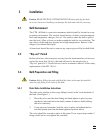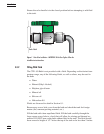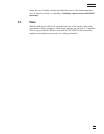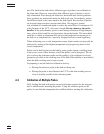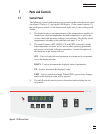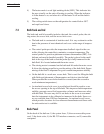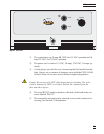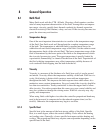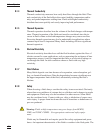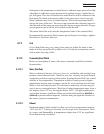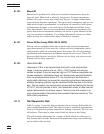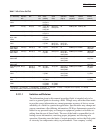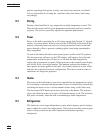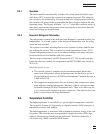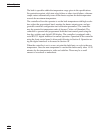
8 General Operation
8.1 Bath Fluid
Many fluids work with the CTR –80 bath. Choosing a fluid requires consider
-
ation of many important characteristics of the fluid. Among these are tempera
-
ture range, viscosity, specific heat, thermal conductivity, thermal expansion,
electrical resistivity, fluid lifetime, safety, and cost. If the viscosity becomes too
great, the stirrer may not function.
8.1.1 Temperature Range
One of the most important characteristics to consider is the temperature range
of the fluid. Few fluids work well throughout the complete temperature range
of the bath. The temperature at which the bath is operated must always be
within the safe and useful temperature range of the fluid. Set the cutout to meet
the temperature limits of the selected fluid. The lower temperature range of the
fluid is determined by the freeze point of the fluid or the temperature at which
the viscosity becomes too great. The upper temperature is usually limited by
vaporization, flammability, or chemical breakdown of the fluid. Vaporization of
the fluid at higher temperatures may affect temperature stability because of
cool condensed fluid dripping into the bath from the lid.
8.1.2 Viscosity
Viscosity is a measure of the thickness of a fluid, how easily it can be poured
and mixed. Viscosity affects the temperature stability of the bath. With low vis-
cosity, fluid mixing is better which creates a more uniform temperature
throughout the bath. This improves the bath response time which allows it to
maintain a more constant temperature. For good control the viscosity should be
less than ten centistokes. Twenty centistokes is about the upper limit of allow
-
able viscosity. Viscosities greater than this cause very poor control stability and
may also overheat or damage the stirring motor. With oils viscosity may vary
greatly with temperature.
When using fluids with higher viscosities the controller proportional band may
need to be increased to compensate for the reduced response time (see Sec
-
tion9.6). Otherwise the temperature may begin to oscillate.
8.1.3 Specific Heat
Specific heat is the measure of the heat storage ability of the fluid. Specific
heat, to a small degree, affects the control stability. It also affects the heating
and cooling rates. Generally, a lower specific heat means quicker heating and
cooling. The proportional band may require some adjustment depending on the
specific heat of the fluid.
27
8 General Operation



